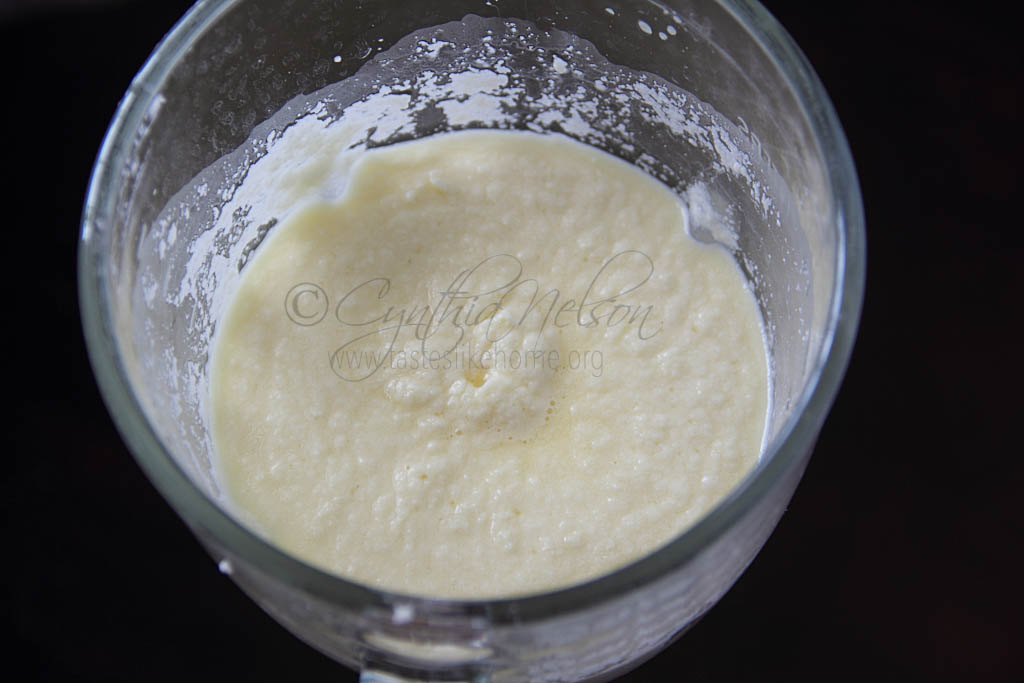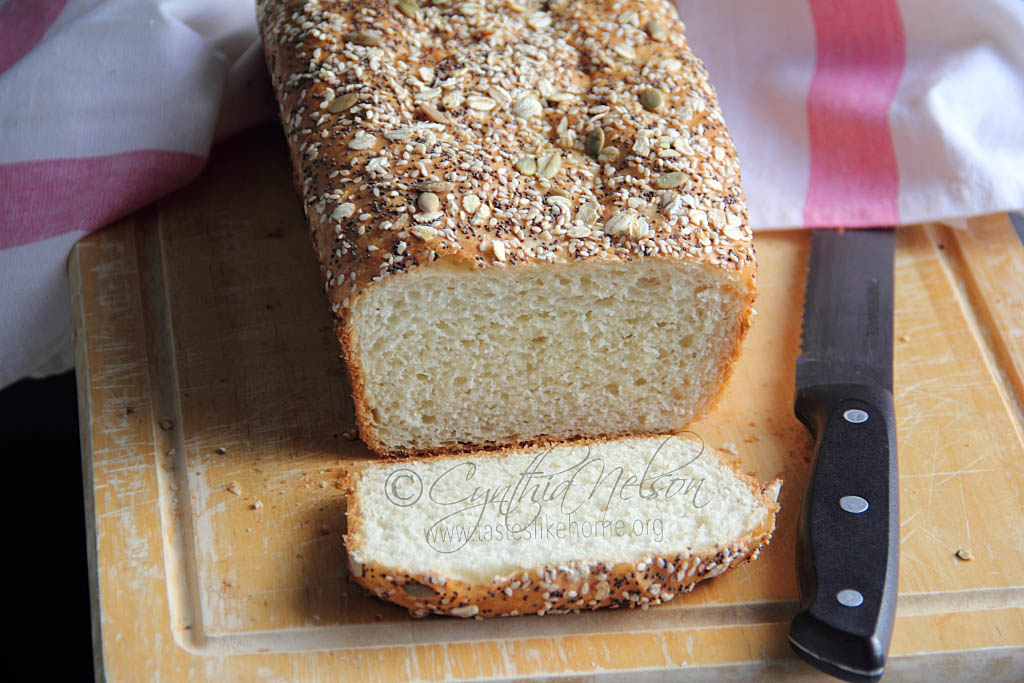You did not misread the headline. This is not about the popular and well-known local staple, Cassava Bread. This is about the cassava I put into my regular bread mix to make a soft white bread.
 Adding fresh grated cassava to flour is nothing new, we do it to make bakes and dumplings, but I have never added it to flour to make bread, until now. Often when I make bread and want to add more fibre or make it a little healthier, I opt for a mixture of white and some type of whole flour. However, when it comes to gluten-free flours made from ingredients such as ground provisions, I stay away from those. Instead, I use the ground provisions in their fresh state – raw or partially cooked and then mashed. I find the texture to be much more pleasing and I do not have to add more ingredients than the recipe calls for to keep the bread moist and tender. The dried flours always need more water to rehydrate and bloom (understandably so). And with some of those flours, I find their flavours a little more pronounced in the baked goods than I like, such as breadfruit. Of course, this is all a matter of personal preference and taste; always do what works for you and what pleases you.
Adding fresh grated cassava to flour is nothing new, we do it to make bakes and dumplings, but I have never added it to flour to make bread, until now. Often when I make bread and want to add more fibre or make it a little healthier, I opt for a mixture of white and some type of whole flour. However, when it comes to gluten-free flours made from ingredients such as ground provisions, I stay away from those. Instead, I use the ground provisions in their fresh state – raw or partially cooked and then mashed. I find the texture to be much more pleasing and I do not have to add more ingredients than the recipe calls for to keep the bread moist and tender. The dried flours always need more water to rehydrate and bloom (understandably so). And with some of those flours, I find their flavours a little more pronounced in the baked goods than I like, such as breadfruit. Of course, this is all a matter of personal preference and taste; always do what works for you and what pleases you.

I wanted to share my experience with you because the bread and rolls turned out really well, the texture soft. One of the things is that I did not have to use any water to make the dough because of the rich moisture from the grated cassava. I really like this bread and I think you will too. Here’s the other thing about using ground provisions in their fresh, raw state – they cost significantly less than the same ingredients in their dried, ground form: flours.
Before we get to the recipe, I know you may frown at the idea of grating cassava by hand. Guess what, you don’t have to. Years ago, since I discovered the amazing texture and ease of work to puree cassava in an electric blender, I never hand-grate cassava anymore. Here’s how to blend-grate the cassava.

Peel the cassava and chop it into 1 to 1 and ½ inch pieces add it to a jug blender and using a little water at a time, blend-puree the cassava until smooth. The final mixture should be thick and moist not loose and watery. Work in batches!
Bread with Cassava
Yield: 2 (9 x 5) loaves or 1 large loaf/ 12 rolls
INGREDIENTS
1 pound white all-purpose flour, plus extra for work surface
1 teaspoon dried instant yeast
1¼ teaspoons fine table salt
2 heaped tablespoons sugar
3 tablepoons melted butter
2 cups grated cassava
Oil – to rub dough and bowl
DIRECTIONS
Mix together the flour, yeast, salt and sugar, then rub in melted butter.
Add the cassava and mix to form a dough.
Generously flour a work surface, transfer the dough to the surface and knead for 10 minutes until smooth. You made need to add a dusting of flour as you work.
Rub the oil with dough and transfer to an oiled bowl. Cover and rest for 90 minutes or until the dough has more than doubled in size.
Prep pans by rubbing with oil, or, if making rolls, line a 13 x 18-inch sheet pan with parchment paper.
Punch down the risen dough, knead for 2 minutes and then divide equally to make 2 small loaves or divide equally into 12 pieces and form into balls.
Place the dough seam-side down into the pans, dab lightly with oil and cover loosely with plastic wrap and let rise for 45 minutes.
25 minutes into the second rise, preheat the oven to 375 degrees F for 20 minutes.
Transfer pans to the oven and bake for 25 – 30 minutes or until the bread is brown.
Remove pans from the oven and rest for 7 minutes before removing from pans and placing on wire rack(s) to cool.
Serve warm or at room temperature.
NOTE
I wanted to decorate my bread rolls, so I brushed them with an egg wash (1 room temperature egg beaten with 1 tablespoon water) and sprinkled with sesame seeds. You can use poppy seeds, pumpkin seeds or whole oats instead of sesame seeds.
Let me know how it turned out for you.
Cynthia

